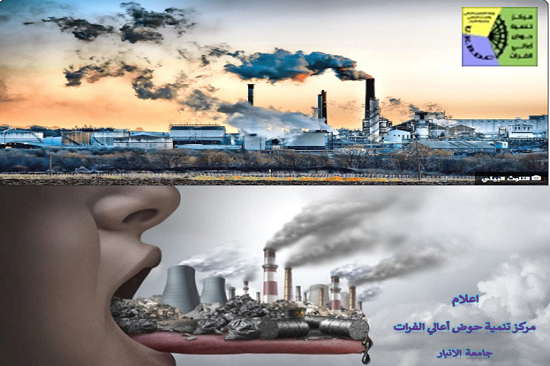| News Details |
Data on pollutant concentrations in Iraqi airspace according to measurements provided by satellites
2024-10-09

The Upper Euphrates Basin Developing Centre at the University of Anbar announced the data on the concentrations of pollutants in the Iraqi airspace per square kilometre, and Assistant Professor Dr. Ahmed Jassam Mekhlif, a climate expert in the Natural Resources Development Department at the Centre, stated that according to the European model (ECMWF), a recurrence of high concentrations of sulphur dioxide gas (SO2) over Baghdad, Fallujah, Habbaniya, Tikrit and Al-Sharqat, from Wednesday night, 9/10/2024, as it can be clearly distinguished in the atmosphere with a smell similar to the smell of Rotten eggs, and the reasons that lead to an increase in (SO2) in the atmosphere are:
1- Industrial emissions: Industrial processes that use fossil fuels such as oil and coal produce sulphur dioxide as a by-product.
2- Burning fossil fuels: The normal combustion of fossil fuels in cars and electrical stations produces sulphur dioxide.
3- Volcanic activity: Volcanoes secrete sulphur dioxide and other gases that affect air quality and do not exist in our country.
But the first two reasons are behind this increase, as a result of the incomplete combustion of fossil fuels, and the World Health Organization (WHO) indicates that hourly averages of sulphur dioxide should not exceed 20 micrograms per kilogram, to protect human health. But what we note according to the European model (ECMWF) is that the percentage reached in Baghdad (120.37), in Fallujah (113.6), in Habbaniyah (105.14), and in Tikrit and Sharqat (127.4) milligrams, and these percentages indicate high risk levels in the atmosphere, so it is necessary to take the necessary measures by the Ministry of Environment to reduce this pollution, which causes health problems such as respiratory infections, worsening asthma, and negative effects on the heart and nervous system.
These scientific bulletins come within the program of the Upper Euphrates Basin Development Center to monitor climate change and its effects, especially on the environment, with the support and follow-up of the university presidency within its strategic plan to achieve the goals of sustainable development and Vision 2030.
#Upper_Euphrates_Basin_Developing_Center








